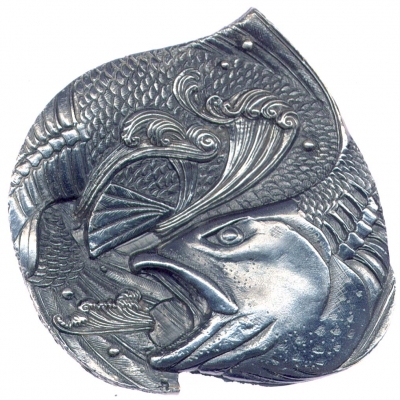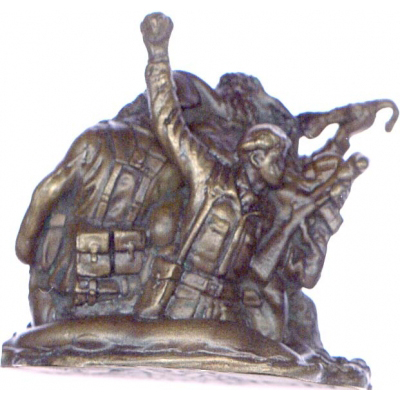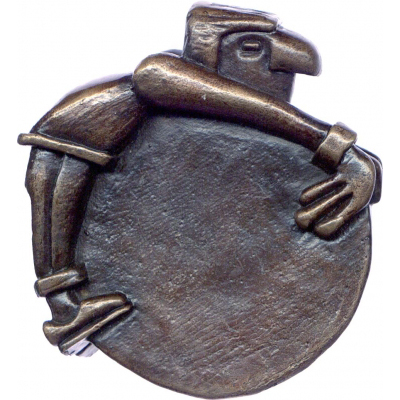BETHAN WILLIAMS
Bethan Williams was born in 1964, and studied art at Bangor Technical College (1982-83), and at City of Birmingham Polytechnic (1983-86), where she specialised in silversmithing and jewellery and obtained a first class honours degree. In 1986-87 she attended a City and Guild die engraving course.
She was won prizes offered by the British Jewellers’ Association, the Royal Society of Arts, and the City of Birmingham. In 1992 her design for a plate was accepted for use in government buildings including 10 Downing Street and British embassies, and in the same year she won a table cutlery design competition organised by Arthur Price of England. She has produced jewellery for Tucker Fasteners of Birmingham, and in 1987 established her own business as a model-maker. In 1993 she was joint winner of a Royal Mint competition for a medal design commemorating the twenty-fifth anniversary of the opening of the new Royal Mint at Llantrisant.
About her BAMS medal, Gwyniad, the artist writes: ‘In a number of deep water lakes in the British Isles there are populations of small silver-coloured, herring-like fish, referred to as white fish. In the regions where they are found they are called by their local names: “Gwyniad” in Bala in North Wales; “Vendace” in Derwentwater; “Pollan” in Lough Ern; and “Powan” in Loch Lomond.
“The fish is basically the same in all these areas, but there are small differences in the number of gill rakers in each case. It has therefore been suggested that they are different species. The whole group has one characteristic in common – a small fin shaped piece of skin found close to the tail on the top side of the fish – which relates them to the salmon family. It is said that the white fish’s ancestors were the ancient salmon. These migratory ancestors are believed to have entered fresh water to spawn – like the salmon of today. During the Ice Ages, these ancient salmon were trapped in their spawning grounds. Some survived in their new land-locked waters and changed from a migratory habitat to a permanent fresh water environment. To allow them to survive in these cold high altitude lakes, their feeding habits also changed, and, from a predatory fish, this ancient salmon evolved into the placid, plankton eating white fish.
“This medal is based on the Gwyniad. One side shows the Gwyniad circling Tegid Lake, where these fish were trapped and evolved. This has colour of bright silver. The other side shows a salmon representing the Gwyniad’s ancestors. Wild and aggressive bone patterns and slate colour oxide suggest fossilised stone. “The inscription is on the side of the the medal: “Y mynydd ei faglwr ai Geidwad” (The mountain his trapper and keeper); “Ei linach yn rhydd yng ngwyllt y mor” (His lineage free in the wild of the sea).’





